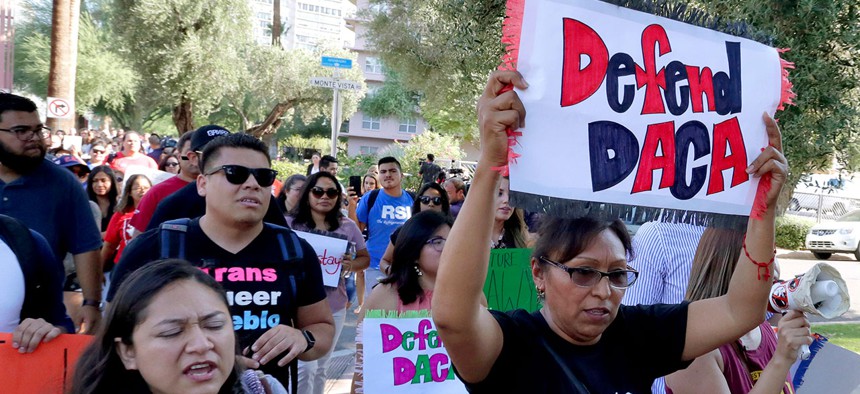What Trump’s New Dreamer Proposal Means For Immigrants, By The Numbers
It's Trump's most generous offer on DACA, but he's also asking for a lot in exchange.
The Trump administration has a new plan to solve the immigration quandary that shut down the government last week.
According to a proposal released Thursday by the White House, Trump is prepared to give a path to U.S. citizenship to some 1.8 million undocumented immigrants known as Dreamers. All came to the United States as children, and make up a much larger group than is currently protected from deportation by the existing Deferred Action for Childhood Arrivals program, or DACA.
This is the most generous offer the president has put on the table so far, and one that’s sure to please the majority of Americans who believe Dreamers have the right to live where they grew up. But Trump’s asking for a lot in exchange.
The rest of the proposal, which was apparently devised by senior policy advisor Stephen Miller, reads like an immigration hawk’s wish list. It would end the visa lottery program, which allows some 50,000 immigrants from around the world to come the United States every year. It drastically reduces family-based immigration. It also demands massive government spending—a $25 billion budget— for border security, part of which Trump could spend on his long-promised border “wall” between the United States and Mexico.
Permanently admitting 1.8 million Dreamers would no doubt be hard to swallow for Trump’s most conservative supporters. But the cuts to the other immigrant visa programs would make up for them in just a few years.
Here’s how the math would work:
From fiscal 2014 to fiscal 2016, the United States issued about one million green cards a year. Of those, some 700,000, on average, were given to people joining their families in the United States. Roughly 60 percent were granted to the spouses and minor children of U.S. citizens and permanent residents. The rest went to the parents and adult children of US citizens, their less immediate relatives (like siblings and grandchildren,) and permanent residents’ adult children.
Under the new plan, only the spouses and minor children would get green cards. Assuming admission trends remain the same, subtract an average 280,000 from the roughly one million green cards a year.
Killing the visa lottery, known as the diversity visa program, would slash the number of green cards by another roughly 50,000 a year.
That leaves 670,000 green cards per year.
It would take less than six years for these green card reductions—of around 330,000 a year—to equal the 1.8 million Dreamers allowed to stay.
The plan also targets undocumented immigrants with a series of measures designed to make it easier to detain them and deport them.
As much as they want to fix DACA, the Miller plan might be too extreme for Senate Democrats, whose votes are necessary to prevent another government shutdown over immigration.



